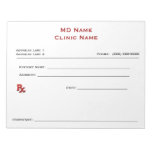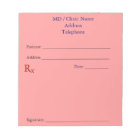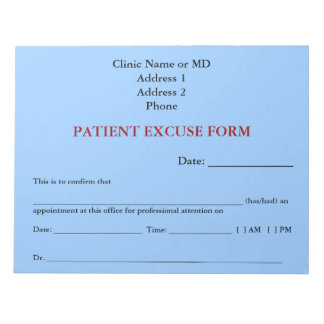Total joint replacement is one of the most complex and high-touch procedures in orthopedics. From the initial referral through postoperative recovery and rehabilitation, the path to a successful outcome requires much more than surgical skill. It requires consistent, timely communication and patient engagement. Compared to less invasive or more routine treatments, joint replacement demands an extended and coordinated communication strategy to support patient understanding, adherence and reassurance throughout the surgical and recovery journeys.
Two-way conversational text messaging, which allows patients to respond to messages directly, offers a powerful
support solution to this challenge. Unlike cumbersome phone tag or one-way messaging, two-way texting, which can be automated, provides a streamlined method for practices, surgical facilities and patients to stay connected. For referring physicians and their offices, adding and further leveraging text messaging presents an opportunity to remain engaged with patients during key touchpoints before and after surgery — even after the patient is temporarily in the care of a surgical facility.
Total joint replacement patients face an intensive and extensive process that includes education, physical preparation, procedure logistics, recovery and rehabilitation. Missed instructions or lack of clarity at any stage can delay recovery, increase risk and complications, or erode patient confidence. Practices that maintain consistent communication before, during and after surgery are better positioned to ensure patients feel supported and stay on track.
Using text messaging throughout the joint replacement journey
Below are some of the more critical moments when practices should use two-way text messaging to engage patients undergoing joint replacement surgery.
Referral and confirmation
Patients often feel uncertain after receiving a referral for joint replacement. This is an ideal time to use text messaging to reinforce that their provider is involved and supportive.
Example message: "Hello, this is Dr. Smith's office. We have submitted your referral for total knee replacement to Main Street Orthopedic Surgery Center. You should hear from them shortly. Let us know if you have any questions."
Example message: "We are checking in to confirm that you heard from Main Street Orthopedic. Please reply YES if they have contacted you or NO if not."
This kind of communication assures the patient that their care team is still monitoring the process after the patient is being passed off to a surgical facility, thus helping reduce anxiety and better ensuring patient follow-through with their appointment and procedure.
Pre-procedure preparation
Once the procedure is scheduled, patients need to prepare their home and themselves for recovery. Text messaging can deliver timely reminders and provide a channel for questions.
Example message: "Your knee replacement is scheduled for July 10. Have you started preparing your home for recovery? You can access tips for safe setup at shortlink.co/surgprep."
Example message: "Remember to stop taking anti-inflammatory medications 7 days before surgery unless directed otherwise. Have questions? Text us here."
This form of outreach allows practices to stay involved in ensuring patients are ready and reduces the chance of cancellations or complications.
Immediate post-procedure follow-up
Although the surgical facility will provide post-operative care, referring practices should reach out shortly after the surgery to show continuity and support as well as flag potential issues quicker to help reduce the likelihood of serious infections, readmissions, or other adverse outcomes.
Example message: "We hope your surgery went well! We would love to hear how you are feeling. Text us an update when you are able."
Example message: "Your shoulder replacement recovery is important to us. If you have questions or concerns as you heal, please reach out. We are here to help and happy to answer any questions you have."
These messages reinforce the patient-provider relationship and provide a safety net in case the patient feels uncertain or has unmet needs.
Recovery and physical therapy coordination
Practices can continue supporting the recovery phase by helping patients stay engaged with physical therapy and follow-up appointments.
Example message: "Have you scheduled your physical therapy sessions yet? Let us know if you need a referral or location recommendations."
Example message: "How is physical therapy going this week? If you are having difficulty or need adjustments, let us know so we can help."
By sending periodic check-ins, practices can catch issues early and provide encouragement to keep patients motivated.
Follow-up and final appointments
Follow-up visits are crucial for monitoring progress, identifying complications and showing support to patients as they recover. Text messaging helps keep these appointments and their importance top of mind.
Example message: "It is time to schedule your six-week post-op appointment. Access our scheduling system at shortlink.com/schedule or text us here and we can help set it up."
Example message: "Do you have any lingering discomfort or questions as you reach the end of your hip replacement recovery period? Let us know so we can support you."
These messages signal that the practice remains committed to the patient's full recovery, even months after surgery.
Importance of coordinated messaging with surgical facilities
Since surgical facilities also communicate with patients, it is important for referring practices to coordinate communication and avoid mixed messages. Text messaging allows practices to better time outreach effectively and avoid duplication. Clear internal workflows and shared timelines can ensure the patient receives the right message at the right time from the right source.
Using analytics to inform strategy
Text messaging platforms may offer real-time, actionable analytics that enhance communication efforts. Practices can access data that reveals engagement trends and patterns, identifying which patients received and responded to messages, which received but did not act and which never received the message. More advanced platforms may also track interactions with short links embedded in messages, providing insights into which patients are engaging with educational materials, pre-operative instructions, appointment scheduling portals, or other linked resources. These analytics help practices refine their outreach strategies, better identify patients who may need or benefit from additional support and assess the effectiveness of their messaging over time.
Text messaging as the total joint communication backbone
Total joint replacement requires more than a successful procedure. It demands sustained communication and ongoing patient engagement and adherence. Two-way text messaging empowers practices to maintain their visibility, offer support and reinforce compliance throughout the surgical journey. Texting helps reduce the burden on office staff by streamlining interactions, while also creating a more responsive and reassuring experience for patients.
When used strategically, text messaging can become the communication backbone of total joint surgery. It keeps patients on track, fosters stronger connections between providers and patients, enhances patient and physician satisfaction and ultimately leads to better clinical outcomes. For practices aiming to improve care for joint replacement patients, investing in a thoughtful, coordinated texting strategy is both a practical and essential step.

Medical and Rx Pads

Billing and Collection Supplies
Business Cards and Stationary











